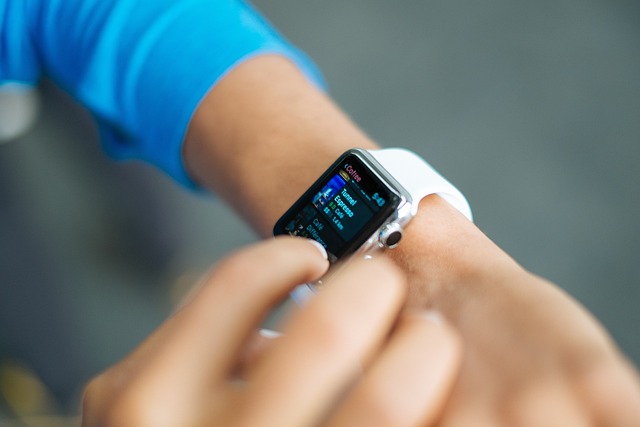## Introduction
In the ever-evolving landscape of healthcare, technology continues to play a crucial role in revolutionizing disease detection and prevention. One such technological advancement that holds great promise is the use of smartwatches to monitor body temperature. Recent studies have shown that continuous measurement of body temperature using smartwatches can be a game-changer in the early detection of chronic diseases such as type 2 diabetes, hypertension, liver disease, kidney failure, and more [^1^][^4^]. This groundbreaking research opens up new possibilities for proactive healthcare and personalized disease management.
The Study: Unveiling the Potential of Body Temperature Monitoring
A study conducted by the Perelman School of Medicine, published in the journal Nature Communications, shed light on the potential of continuous body temperature monitoring using smartwatches [^1^]. The researchers collected data from over 92,000 participants and observed their wrist temperature rhythms, which reflect body temperature fluctuations throughout the day and night. The study revealed a significant correlation between decreased diurnal temperature rhythm and the future development of chronic diseases [^1^]. Participants with lower day-night temperature differences exhibited a higher risk for various medical conditions, including nonalcoholic fatty liver disease (NAFLD), type 2 diabetes, renal failure, hypertension, and pneumonia [^1^].
These findings emphasize the importance of maintaining consistent circadian habits, such as regular sleep patterns and physical activity, to promote overall health and prevent the onset of chronic diseases [^1^]. Dr. Thomas Brooks, the lead author of the study, highlighted the value of incorporating emerging technologies like smartwatches into health monitoring practices, stating, “These findings indicate the potential to marry emerging technology with health monitoring in a powerful new way” [^1^].
Wearable Technology: The Future of Personalized Healthcare
Wearable technology, including smartwatches, has gained significant popularity in recent years. These devices, equipped with built-in sensors, have the capability to provide real-time health data, enabling individuals and healthcare providers to assess health risks and make informed care decisions [^1^]. The integration of wearables into healthcare holds immense potential for improving patient outcomes and reducing healthcare costs.
Advancements in Wearable Sensors and Data Analytics
The successful implementation of wearable technology relies on the continuous advancements in wearable sensors and data analytics. Wearable sensors have become increasingly sophisticated, capable of monitoring various physiological parameters such as heart rate, sleep quality, energy expenditure, and step count [^5^]. These sensors collect vast amounts of data, which, when analyzed using advanced algorithms, can provide valuable insights into an individual’s health status.
The Role of Smartwatches in Disease Detection and Prevention
Smartwatches, in particular, have emerged as versatile devices for disease detection and prevention. Their ability to continuously monitor body temperature, combined with other health-related metrics, opens up new avenues for early disease detection. By analyzing patterns and trends in body temperature, smartwatches can provide early warning signs of potential health issues, allowing individuals to seek timely medical intervention [^1^]. This proactive approach to healthcare can significantly impact disease outcomes and improve overall well-being.
Potential Applications in Chronic Disease Management
Chronic diseases pose a significant burden on individuals and healthcare systems worldwide. Finding innovative solutions for effective disease management is imperative. Smartwatches offer a promising tool for individuals with chronic diseases to monitor their health status and make informed decisions about self-management strategies [^2^]. For example, individuals with type 2 diabetes can use smartwatches to track their body temperature, exercise capacity, and biomarkers like hemoglobin A1c [^2^]. These real-time data can help individuals understand the impact of their lifestyle choices on their health and make necessary adjustments to prevent disease progression.
The Way Forward: Future Research and Implications
The current studies on body temperature monitoring using smartwatches represent just the tip of the iceberg. Further research is needed to explore the full potential of this technology and its application to a broader range of chronic diseases. Future studies should aim to include diverse populations, considering factors such as age and ethnicity, to ensure the findings are applicable to a wider range of individuals [^1^]. Additionally, collaboration between researchers, healthcare providers, and technology companies is crucial to developing user-friendly and accurate wearable devices that seamlessly integrate into existing healthcare systems.
The implications of incorporating smartwatches and wearable technology into healthcare are far-reaching. Beyond disease detection and prevention, these devices can empower individuals to take control of their health and actively participate in their own care. The real-time data provided by smartwatches can facilitate personalized treatment plans and enable healthcare providers to monitor patients remotely, reducing the need for in-person consultations [^4^]. Moreover, the integration of wearable technology into healthcare systems has the potential to streamline healthcare delivery, improve patient outcomes, and reduce healthcare costs.
Conclusion
The future of disease detection and prevention lies in the continuous monitoring of body temperature using smartwatches and other wearable devices. The ability to track body temperature fluctuations in real-time opens up new possibilities for early detection and proactive management of chronic diseases. However, further research and technological advancements are necessary to fully unlock the potential of this technology. As we move forward, it is essential to embrace the integration of wearable technology into healthcare systems, harnessing its power to improve patient outcomes and transform the way we approach disease management. By combining the convenience of wearable devices with the expertise of healthcare professionals, we can pave the way for a healthier and more proactive future.
Keywords: body temperature monitoring, smartwatches, wearable technology, chronic diseases, disease detection, disease prevention, healthcare, personalized healthcare, remote monitoring, proactive healthcare, self-management, healthcare outcomes.
Additional Information: Wearable technology has the potential to transform various aspects of healthcare, including remote patient monitoring, telehealth, and personalized medicine. The integration of artificial intelligence and machine learning algorithms into wearable devices can enhance their capabilities and improve the accuracy of disease detection and prediction.
References:
[^1^] Perelman School of Medicine. “Continuous body temperature monitoring using smartwatches holds key to detecting chronic diseases.” Nature Communications, 2023.
[^2^] UH Hospitals. “Smartwatches hold promise to detect disease and improve health.” UH Blog, 2022.
[^4^] The Times of India. “How often do women need to check PCOS?” Times of India, 2023.
[^5^] AIP Publishing. “Recent advances in wearable sensors and data analytics.” Biophysics Reviews, 2023.


